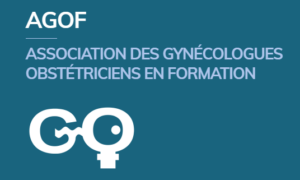In 2010, the French National Authority for Health (HAS) issued the famous slogan for apprentice surgeons: “Never perform surgery on a patient for the first time” (1). It is sometimes difficult for a young surgeon to accept that he or she has not received sufficient training, despite spending many hours in the hospital (2). Companionship has its limits in that it does little to overcome inter-individual variability or the skills of the trainer. Companionship is not always taken into account in the hourly working time of surgeons, in their attribution of merit, or even in their salary (3). In France, the population of obstetric gynaecologists in training represents a high proportion of practising obstetric gynaecologists (1800 out of 5600) (4). It is a receptive and proactive population adapted to the study of training evaluation.
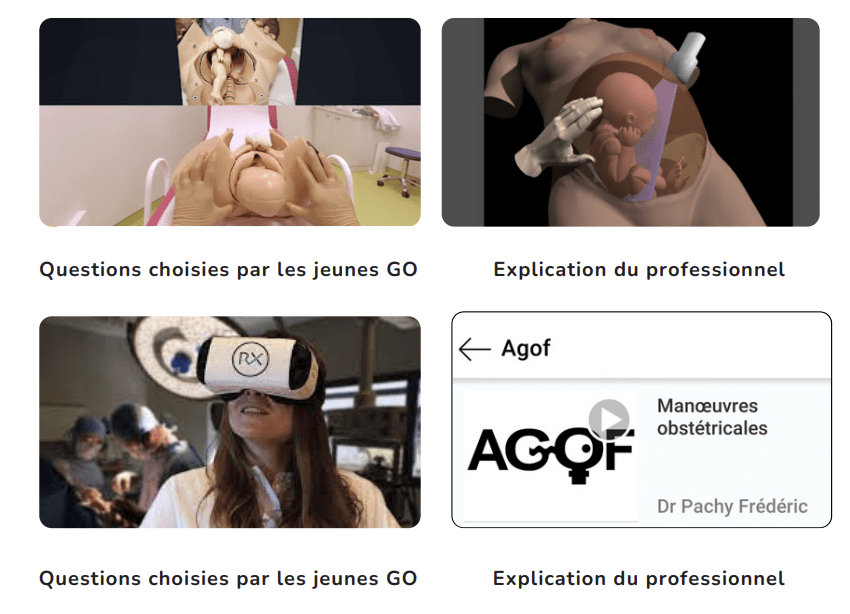
Tutorials
Association tutorials available in virtual reality on the Revinax smartphone application: Left, top: shoulder dystocia, fœtus with back to right, from the operator’s point of view, combined with an internal view filmed simultaneously by a synchronised camera. On the right, top: additional data from a tutorial on probe positioning in foetal ultrasound: the nose-mouth cut using the superior approach. Accessible from the VR scene by turning your head to the left.
The current limits of training by companionship have been demonstrated in the context of emergency surgery training, with almost 80% of fellows unable to perform a haemostasis hysterectomy as first-line surgeons (5). The take-up of digital training is estimated at 65% of the workforce, most of whom are trained in theory on an online support for foetal ultrasound (6). In a study conducted at Tenon Hospital (Paris) in 2023, 96% of participants thought that surgical videos were useful for their continuing education, with monthly use (7). The Association of Obstetricians and Gynaecologists in Training is working to provide the most efficient training support for the French-speaking community in the specialty. Here are a few examples of materials that combine content and use.
Which medium for which learning?
Edgar Dale’s 1946 research on memorisation found that after a fortnight, we retained only 10% of what we read and 90% of what we experienced (8). Living through an experience helps you to assimilate it better. Simulation is therefore the technique of choice for learning through experience (as it is more difficult to control the whole of experience during an internship). Reading is a good way of retaining essential theoretical elements, combined with illustrations that allow the reader’s eyes to move back and forth. Audio support can enhance the experience. The podcast channel “Le micro des gynéco” created by the AGOF association has a very high listening rate among the French residents in the specialty (9). It has been listened to around 850 times a week for 2 years, for a population of 1,000 residents (and 400 fellows…). It has been shown that the more a surgeon sees of an operation, the better the first and subsequent operations will be (10). During an operation, the skills to be learned may combine theoretical knowledge, gestures and possibly soft skills (the need to interact with the operating theatre assistant or the team). The main resources provided by surgical videos are improved knowledge of key times (96%), anatomy (83%) and gestures to make/prohibit (86%) (7). First-person learning is different from learning as an operating theatre assistant. The operating theatre assistant learns from a different angle, which is of course recognised as knowledge that is inseparable from the operating procedure itself. Learning as a function of the angle of view is a subject of serious study, in particular with the help of functional MRI (11). The first-person point of view activates the network of mirror neurons. The cerebral cortical areas corresponding to the limbs involved in the gesture are activated (11). This simplifies and improves the process of memorising a gesture (12). So it’s not the same brain areas that are activated when you perform the gesture as when you see it performed.
Virtual reality seems to be the medium of choice for assimilating certain complex procedures by reusing the “practice of the procedure” memory circuit. The use of virtual reality for teaching gynaecological surgery in France seems to have begun as early as 2011 with a laparoscopic hysterectomy tutorial by Dr Crochet at Marseille University Hospital (13), as well as complex obstetric modelling with the help of Dr Jean Paul Renner (14). In 2016, the work of Maxime Ros, a neurosurgeon with a doctorate in educational science, changed the perspective of this medium, bringing the benefits of a first-person viewpoint, real capture and a 180° viewing angle (15). The use of the cardboard with the smartphone to use virtual reality at low cost and material investment for the user is particularly interesting for open access learning.
The AGOF association took part in the creation of 6 virtual reality tutorials on emergency obstetric manoeuvres (shoulder dystocia, breech birth), amniocentesis, trophoblast biopsy and foetal cardiac ultrasound. A foetal surgery operation was filmed with the support of Professor Ville at Necker Hospital (Paris). These videos are from a first-person, 180-degree point of view, accessible without restriction of place or time. Virtual reality is also accessible on smartphones via a cardboard. It is customary for the association to offer cardboards at conferences.
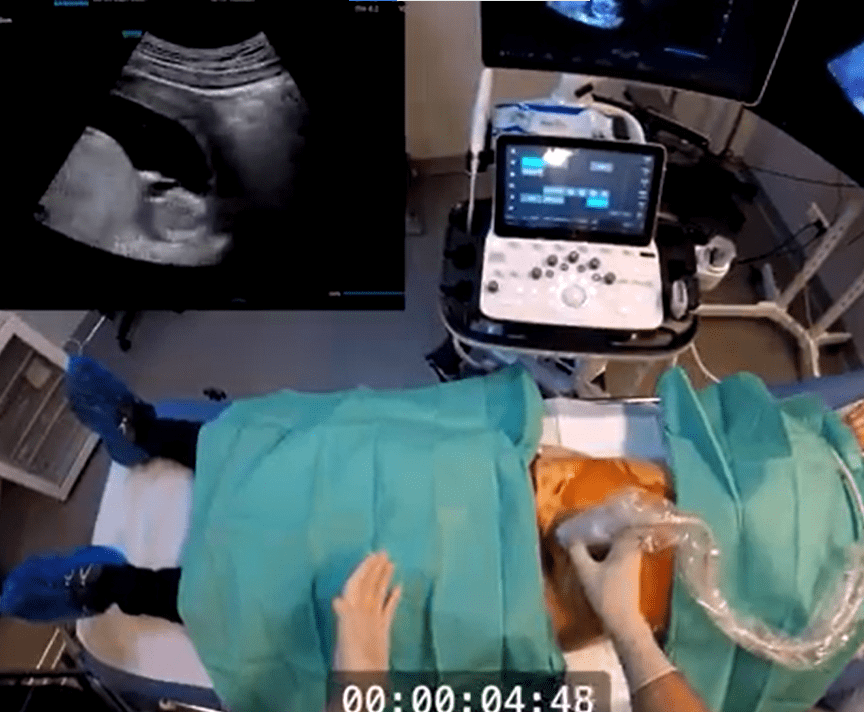
Ultrasound simulation
Trophoblast puncture when the trophoblast is posterior: positioning tips. Operator’s first-person view with synchronised ultrasound screen.
Video with assisted simulation
To teach ultrasound-guided anatomical landmarks, we have developed a concept that combines a short video with an online simulator to reproduce the ultrasound trick associated with exploring the organ of interest. There are no restrictions on location, time or expensive equipment (other than a smartphone). There is no cost for the student.
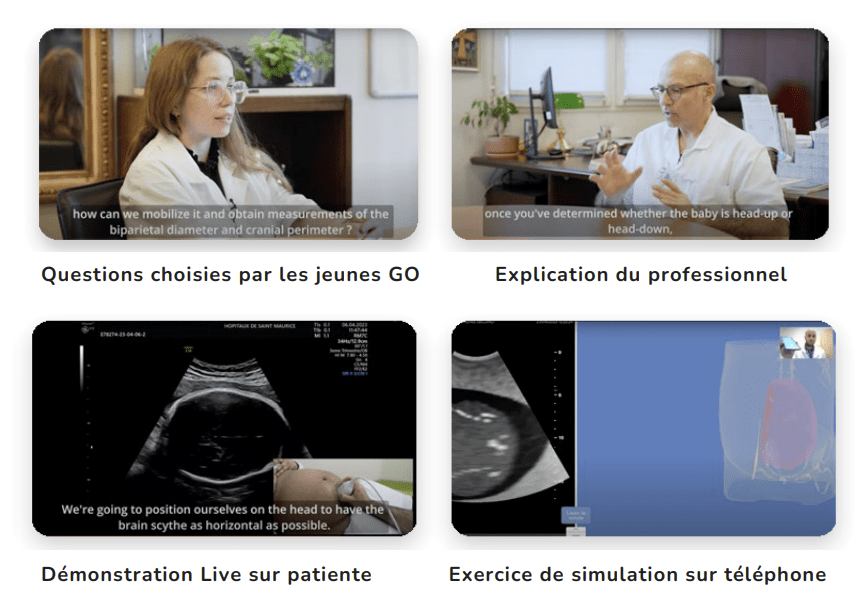
Webseries
The international webseries consists of 4 stages: a MOOC format with questions from users, followed by explanations from the speaker, application to volunteer patients suggested by the learners, and then an online simulation with reconstruction of the study area using segmentation. In this model, the user is at the centre of the concept, enabling sales to be reinvested in new episodes.
Physical and digital learning with technological tools
Lastly, augmented reality can be used in reverse for live learning or simulation. Certain video segmentation techniques could be transmitted live. At the congress on anatomy and robotic surgery organised by the three associations of young surgeons – AGOF, AJCV (visceral surgeons) and AFUF (urologists) – a live broadcast using augmented reality is being planned for October 2024.
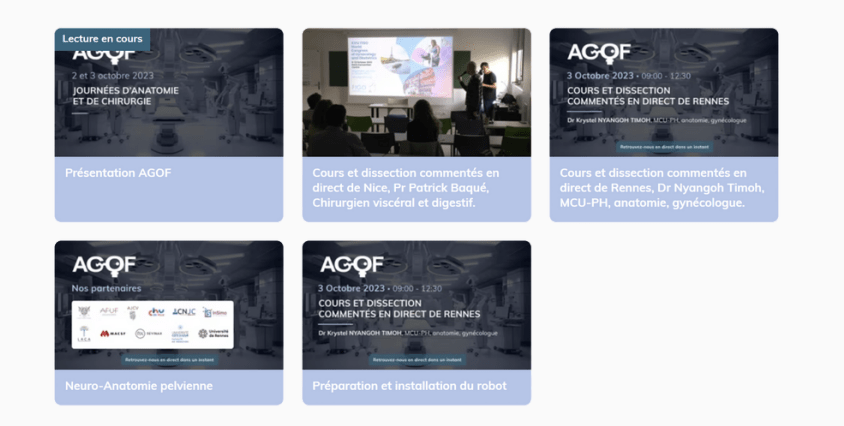
Video platform
Video platform (non-commercial) for live and replay broadcasts of association anatomy and robotic surgery congresses (Association of gynaecologists in training, young visceral surgeons and urologists). Clinical cases prepared using augmented reality.
Difficult access to simulation centres, the era of open source learning with limited equipment
The era of training in university simulation centres seems to be reaching its organisational limits, and access to less restrictive training is becoming more widespread.
The video is freely accessible, as underlined by the advent of MOOCs (massive open online courses). The associative approach has enabled a medium that goes beyond the usual limits of a university. AGOF materials are currently used in 87 countries, most of them French-speaking. The entire community is able to choose the subject and speakers for their courses.
The videos and podcasts are freely accessible to healthcare professionals and the general public. There are no subscription fees, and no need to subscribe to a platform that resells user data. Virtual reality media can be viewed on smartphones using a low-cost helmet called a cardboard, which is easily accessible throughout the country. The ultrasound web series uses an online simulator. The smartphone can be used as an ultrasound probe.
For some time now, we have been seeing a business model created by companies or teachers who see students as a resource for financing these materials. The habit of unlimited “free” work by residents is unfortunately carried over into the mentality of certain company directors or trainers. In the age of digital technology and the Internet, the user is more often the product than the funder. The timid financial investment in a user-led training model is making itself felt. This money is most often invested by non-medical companies, or companies with little contact with users. This could discourage students or surgeons in continuing training from using the French platforms.
Does video rule out companionship?
Compagination using video / face-to-face debriefing in small groups seems to be an under-exploited learning resource. Videos are of better quality than some lecture theatres but do not prevent interaction during dedicated operating times. This is particularly useful for complex procedures, as it allows feedback from the more experienced participants.
Bibliographie
-
-
HAS, 2011, outils_du_guide_methodo_simulation_en_sante_et_gestion_des_risques.pdf.
-
Présentation du Professeur Olivier Turrini sur le temps de travail des internes, 19/06/2019, académie de chirurgie. 2019.
-
La formation initiale des futurs chirurgiens [Internet]. Rapport de l’Académie Nationale de Chirurgie; 2021. Disponible sur: https://www.academie-chirurgie.fr/admin/uploads/media/photo/0001/05/35a693fe9366cbf997c3bde4d4044a28bda66c0d.pdf
-
Morel, Olivier. Enquête démographique , commission CEGO-CNGOF. 2022.
-
Puroski, Laura, Crochet, Patrice. étude nationale sur le ressenti des internes vis à vis de leur préparation aux gestes essentiels de l’internat de gynécologie obstétrique, en comparaison avec le ressenti des PU. 2023;
-
Glicenstein, Frédéric. Utilité de la réalité virtuelle pour l’apprentissage des gestes guidés par l’échographie. Paris Saclay; 2023.
-
Mimoun, Camille, Dabi, Yohann. Place de la vidéo chirurgicale pédagogique pour les internes de gynécologie-obstétrique. Disponible sur: https://videos-chirurgicales.u-paris.fr/place-de-la-video-chirurgicale-pedagogique-pour-les-internes-de-gynecologie-obstetrique/
-
Dale E. Audio-Visual Methods in Teaching. NY Dryden Press 1946. 1946;
-
Le micro des gynéco [Internet]. Disponible sur: https://podcast.ausha.co/le-micro-des-gyneco
-
Custers EJFM, Regehr G, McCulloch W, Peniston C, Reznick R. The Effects of Modeling on Learning a Simple Surgical Procedure: See One, Do One or See Many, Do One? Adv Health Sci Educ. 1999;4(2):123‑43.
-
Jackson PL, Meltzoff AN, Decety J. Neural circuits involved in imitation and perspective-taking. NeuroImage. mai 2006;31(1):429‑39.
-
Ros Maxime. Virtual immersive reality. E-Mem Acad Natle Chir 2017164006. 2017;
-
Crochet P, Aggarwal R, Dubb SS, Ziprin P, Rajaretnam N, Grantcharov T, et al. Deliberate Practice on a Virtual Reality Laparoscopic Simulator Enhances the Quality of Surgical Technical Skills. Ann Surg. juin 2011;253(6):1216‑22.
-
Siméon G. Jean Paul Renner : le dernier cri du premier cri. 2013; Disponible sur: https://www.liberation.fr/societe/2013/05/26/jean-paul-renner-le-dernier-cri-du-premier-cri_905801/
-
Ros M, Neuwirth LS, Ng S, Debien B, Molinari N, Gatto F, et al. The Effects of an Immersive Virtual Reality Application in First Person Point-of-View (IVRA-FPV) on The Learning and Generalized Performance of a Lumbar Puncture Medical Procedure. Educ Technol Res Dev. juin 2021;69(3):1529‑56.
-
Article written by Frédéric Glicenstein, Maternité de Saint Maurice
Read more
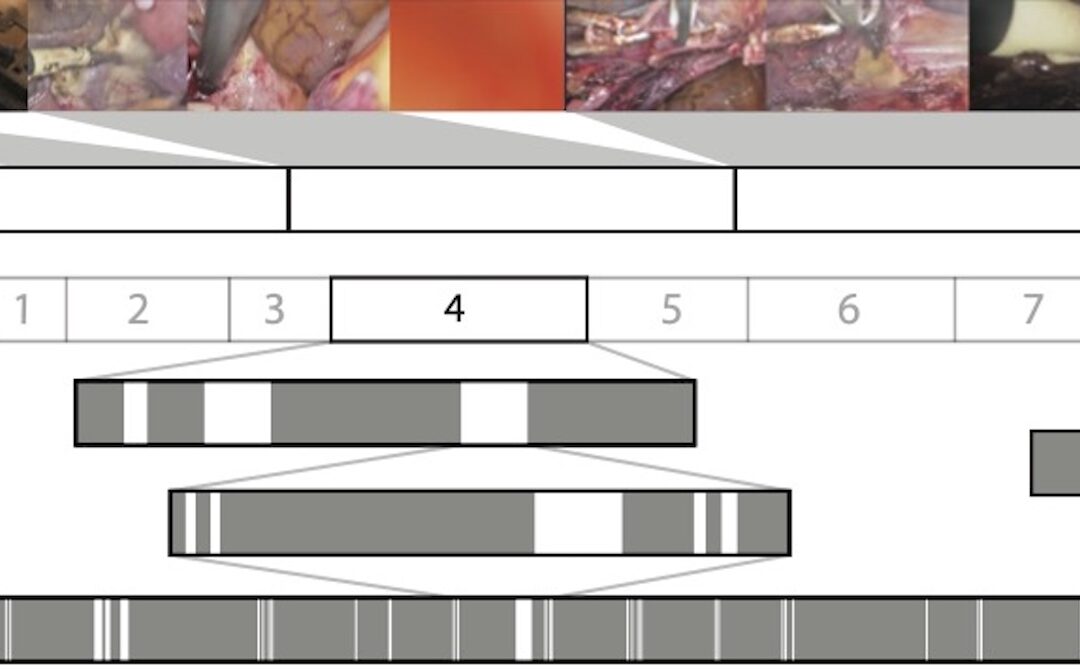
Surgical Video Summarization: Multifarious Uses, Summarization Process and Ad-Hoc Coordination
While surgical videos are valuable support material for activities around surgery, their summarization demands great amounts of time from surgeons, limiting the production of videos. Through fieldwork, we show current practices around surgical videos. First, we...
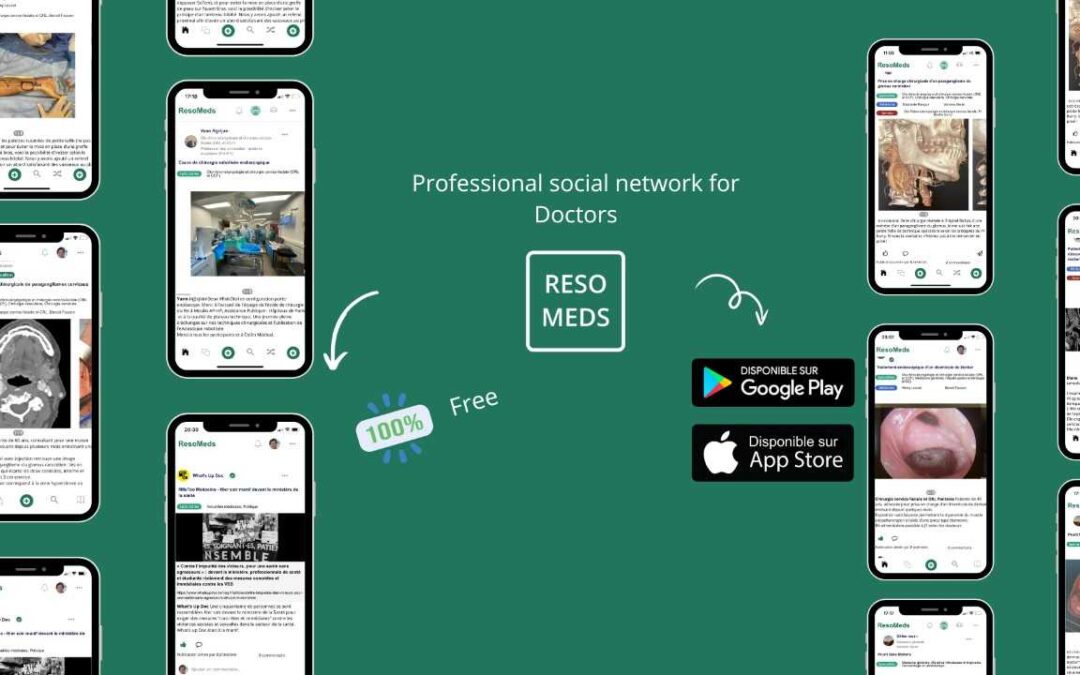
ResoMeds: a social network sharing videos
Case reports enrich medical knowledge and training, and improve practice [1-4]. However, their publication is often limited in existing journals [5]. We aim to highlight the importance of creating a platform for physician exchange to promote peer learning, case...
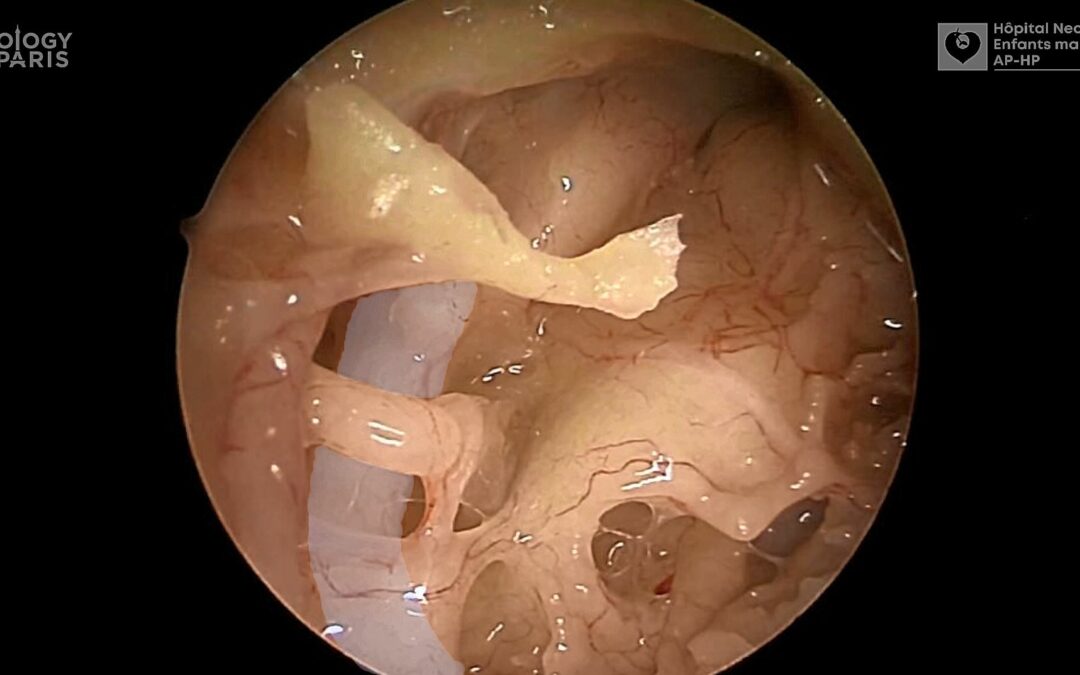
Videos improve knowledge retention of surgical anatomy
In otolaryngology, a new publication shows that an educational video improves anatomy learning and knowledge retention in the long term. This study conducted by the ENT team at Necker-Enfants Malades, APHP (Université Paris Cité) and led by Pr François Simon shows the...
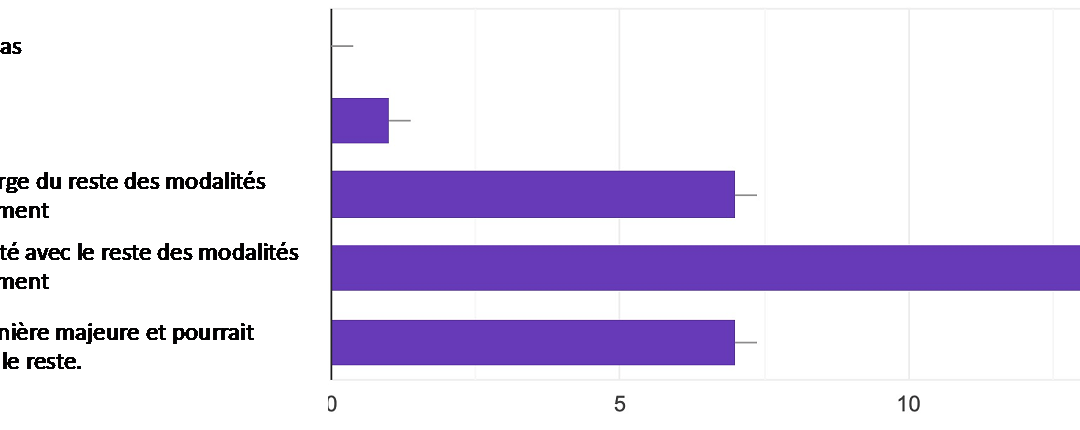
The role of educational surgical videos for gynaecology and obstetrics residents
How can we offer obstetrics and gynaecology residents high-quality surgical training at a time when the number of "simple surgeries" is decreasing due to an increase in complex recruitments in expert centres, when the time devoted to them is being reduced due to...

